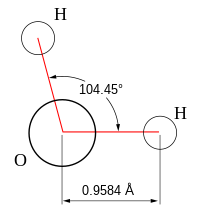
Photo from wikipedia
Blue-light using flavin (BLUF) photoreceptor proteins are essential to many biological processes and are attractive candidates for use in optogenetics. To understand the photocycle mechanism in the Slr1694 BLUF photoreceptor,… Click to show full abstract
Blue-light using flavin (BLUF) photoreceptor proteins are essential to many biological processes and are attractive candidates for use in optogenetics. To understand the photocycle mechanism in the Slr1694 BLUF photoreceptor, adiabatic excited-state quantum mechanical/molecular mechanical (QM/MM) molecular dynamics simulations are performed using Tamm-Dancoff time-dependent density functional theory. These simulations elucidate the roles of protein dynamics, conformational changes, and electrostatics. After photoexcitation to a locally excited state of the flavin, protein reorganization drives electron transfer from Tyr8 to the flavin. The movement of certain charged residues and a decrease in the distance between Tyr8 and the flavin are found to play important roles in facilitating this charge transfer. The formation of this charge-transfer state drives sequential double proton transfer: Tyr8 transfers a proton to the intervening Gln50, which then relays a second proton to the flavin. Although the second proton transfer involves the formation of a singlet diradical ground state, which requires multireference methods, the photocycle dynamics can be continued in an approximate manner by switching to a spin-flip approach. The resulting trajectories trace out the mechanism of photoinduced proton-coupled electron transfer (PCET) in the Slr1694 BLUF photocycle. Propagating the trajectories beyond the PCET reaction identifies possible pathways involving different tautomers of Gln50 that will eventually lead to the light-adapted state. These simulations provide insights into the nonequilibrium dynamics of photoinduced PCET in the Slr1694 BLUF photocycle that have not been attainable with previous simulations.
Journal Title: Journal of the American Chemical Society
Year Published: 2019
Link to full text (if available)
Share on Social Media: Sign Up to like & get
recommendations!